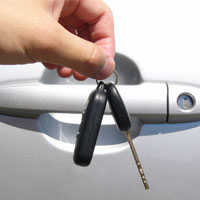
Comparing Hamilton auto insurance rates online can be difficult if you are a beginner to online rate quotes. But don’t be discouraged because there is an easy way to compare rates.
You should make it a habit to take a look at other company’s rates yearly because rates trend upward over time. Even if you got the best rates two years ago there is a good chance you can find better rates now. There is a lot of wrong information about auto insurance online, so we’re going to give you some tested techniques to put money back in your pocket.
Cut your auto insurance rates with discounts
Companies offering auto insurance do not list every available discount very clearly, so here is a list both the well known and also the lesser-known discounts you could be receiving.
- College Student – Any of your kids living away from home attending college and do not have a car may be able to be covered for less.
- Employee of Federal Government – Employees or retirees of the government could cut as much as 10% off with certain companies.
- Accident Free – Drivers with accident-free driving histories pay less as compared to drivers who are more careless.
- Student Driver Training – Cut your cost by having your teen driver successfully complete driver’s ed class in school.
- Low Mileage – Fewer annual miles can qualify you for a substantially lower rate.
It’s important to note that most discount credits are not given to all coverage premiums. The majority will only reduce the price of certain insurance coverages like comprehensive or collision. Even though it may seem like you can get free auto insurance, auto insurance companies aren’t that generous.
Smart Consumers Save More
An important part of buying insurance is that you know the different types of things that play a part in calculating the price you pay for auto insurance. Understanding what determines base rates helps enable you to make changes that can help you get better auto insurance rates.
Shown below are some of the items that factor into your rates.
- Your location affects your rates – Living in less populated areas is a positive aspect when buying auto insurance. Urban drivers tend to have more traffic problems and a longer drive to work. Less people living in that area means fewer accidents.
- Higher deductibles cost less – The deductibles define the amount you are willing to pay in the event of a claim. Insurance for physical damage to your car, also known as collision and other-than-collision, is used to repair damage to your car. A few examples of covered claims are running into the backend of another car, collision with an animal, and windstorm damage. The more expense you have to pay, the lower your rates will be.
- Policy add-ons can waste money – There are a ton of add-on coverages that can waste your money if you aren’t careful. Coverages like personal injury protection, accident forgiveness and additional equipment coverage are some examples. These coverages may sound good when you first buy your policy, but now you might not need them so get rid of them and save.
- Type of vehicle determines base rates – The performance of the vehicle you own makes a substantial difference in the rate you pay. The most favorable rates are generally reserved for lower performance four cylinder passenger models, but the final cost of insurance is determined by many other factors.
- Pleasure use saves money – The more you drive in a year the more you will pay for auto insurance. The majority of insurers rate vehicles based on how the vehicle is used. Vehicles not used for work or commuting receive lower rates than those used for commuting. Ask your agent if your auto insurance policy shows the correct driver usage, because improper ratings can cost you money.
- Discounts for multiple policies – Many companies give discounts to insureds who carry more than one policy in the form of a multi-policy discount. Even with this discount, it’s still a good idea to compare other company rates to ensure the best deal. You may still find a better deal by splitting coverages up.
- Do you know you’re credit rating? – Having a bad credit history is a huge factor in calculating your auto insurance rates. So if your credit rating is not that good, you could be paying less to insure your by improving your rating. Consumers who have high credit ratings tend to be less risk to insure than drivers with lower credit scores.
You are unique and your auto insurance should be too
When choosing proper insurance coverage, there really is not a single plan that fits everyone. Everyone’s situation is unique.
For instance, these questions can help discover if your insurance needs might need professional guidance.
- Does my policy pay for OEM or aftermarket parts?
- What if I total my vehicle and owe more than it’s worth?
- What are Ohio no-fault laws?
- What can I do if my company won’t pay a claim?
- Do I need higher deductibles?
- Can I pay claims out-of-pocket if I buy high deductibles?
- Can I get a multi-policy discount for packaging my home and auto coverage?
If you can’t answer these questions, you might consider talking to a licensed insurance agent. If you want to speak to an agent in your area, fill out this quick form.
Advertising myths
Auto insurance providers like State Farm and Allstate continually stream ads in print and on television. They all make an identical promise about savings after switching to them. But how can every company say the same thing? This is how they do it.
All the different companies have a certain “appetite” for the type of driver that makes them money. An example of a driver they prefer might be between 30 and 50, insures multiple vehicles, and drives less than 7,500 miles a year. Any driver who fits that profile will qualify for the lowest rates and is almost guaranteed to save quite a bit of money when switching.
Consumers who don’t measure up to the “perfect” profile will be charged more money and ends up with the driver buying from a lower-cost company. The ads state “customers who switch” not “everybody who quotes” save that kind of money. That is how insurance companies can confidently claim big savings. That is why it’s extremely important to quote coverage with many companies. You cannot predict the company that will have the lowest rates.
More resources for learning
More detailed Ohio auto insurance information can be read at the Ohio Department of Insurance website. Consumers can read industry bulletins, file complaints about a company, and find out industry alerts.
Other related articles:
In the end, you save
Insureds switch companies for any number of reasons including denial of a claim, delays in responding to claim requests, policy non-renewal and even questionable increases in premium. It doesn’t matter what your reason, finding a great new company is pretty easy and you might even save some money in the process.
We just presented many ways to compare auto insurance prices online. The key thing to remember is the more rate comparisons you have, the better chance you’ll have of finding lower rates. You may even discover the most savings is with some of the lesser-known companies.
When trying to cut insurance costs, don’t be tempted to skimp on coverage in order to save money. In many instances, consumers will sacrifice collision coverage and discovered at claim time that the savings was not a smart move. Your focus should be to purchase plenty of coverage for the lowest price, not the least amount of coverage.

